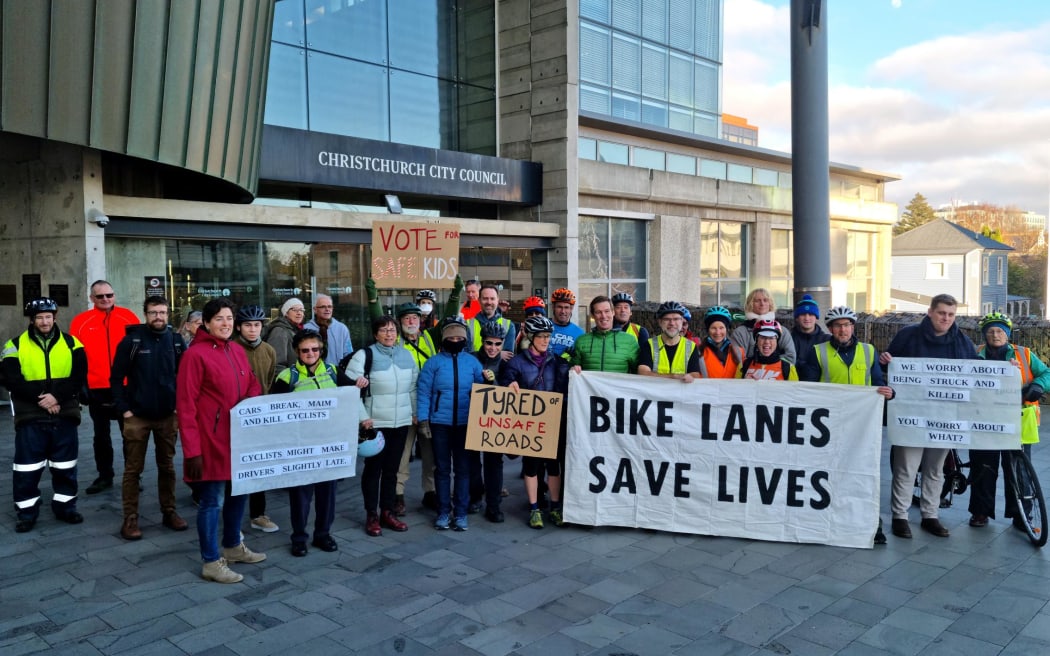Tailwinds and headwinds
I was stoked to hear last week that Wellington's ambitious bike plans have won global recognition. The Bloomberg Initiative for Cycling Infrastructure (BICI) prize is worth $650,000.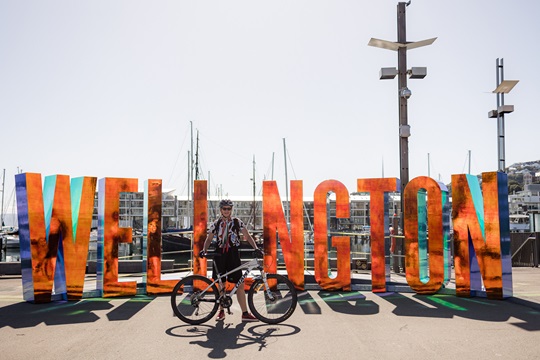
BICI is a competitive grant programme supporting 10 cities around the world to build safe, connected, and sustainable city cycling infrastructure. The award-winning cities, whittled down from 270 to just 10 world-wide, were announced on 2 June.
The award recognises Wellington’s plan to rapidly roll out a city-wide bike network, for its ambitiously innovative approach, and its important partnership with mana whenua.
Here at CAN we're often pushing our cities to achieve more. I'm delighted that CAN could supply a letter of support for Wellington's nomination. More here.
Patrick Morgan, CAN Project Manager
Meet the CAN Board
CAN is a network of people who love riding bikes. We are governed by a Board. We have employees based in Auckland and Wellington. The CAN Board gathered in Wellington in May to get to know each other and review CAN strategy.
Meet our Board members.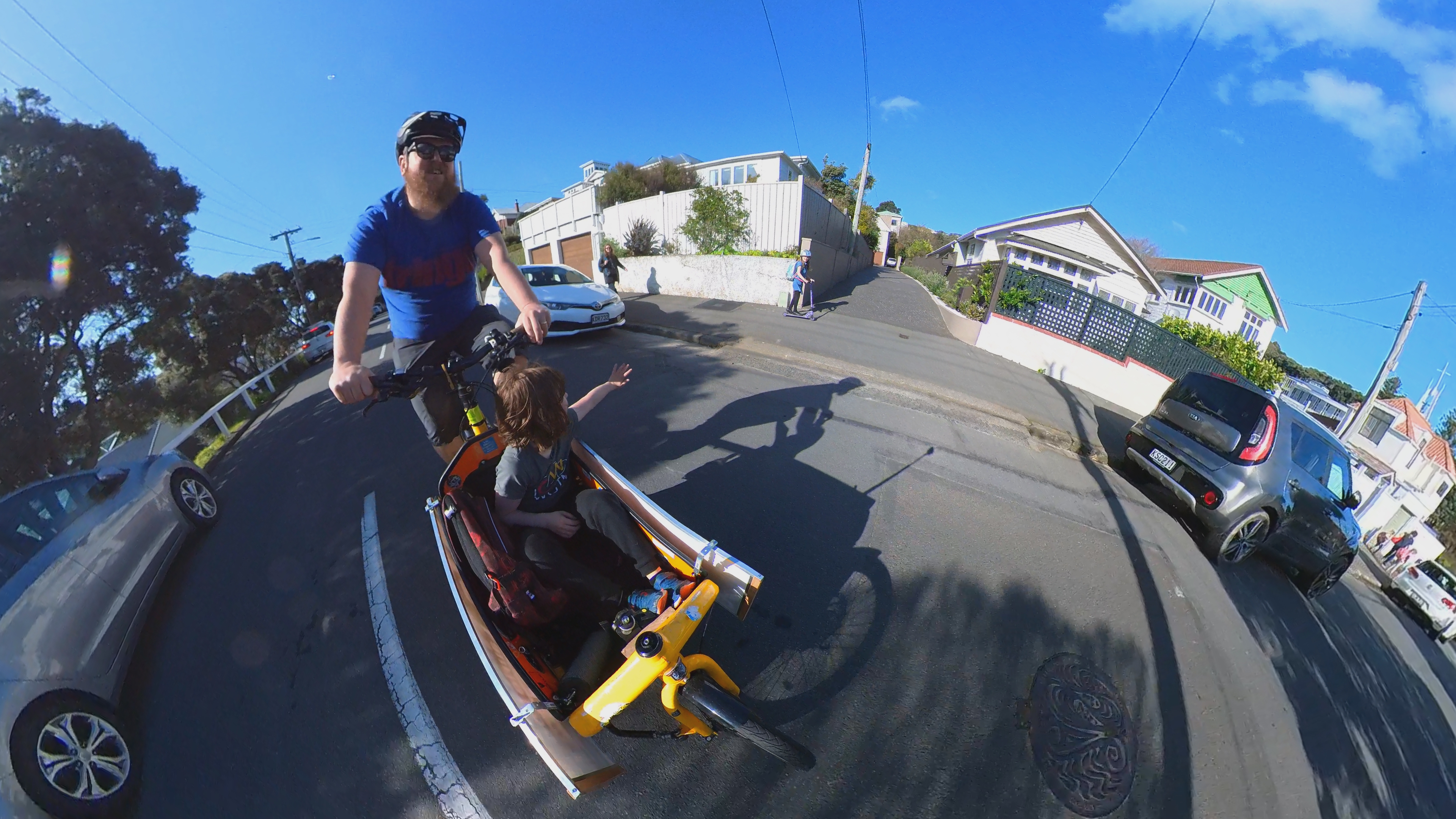
Caption: CAN Chair, Alex Dyer
Planning and Design for Cycling course – 10/10 Excellent!
By Allan Taunt
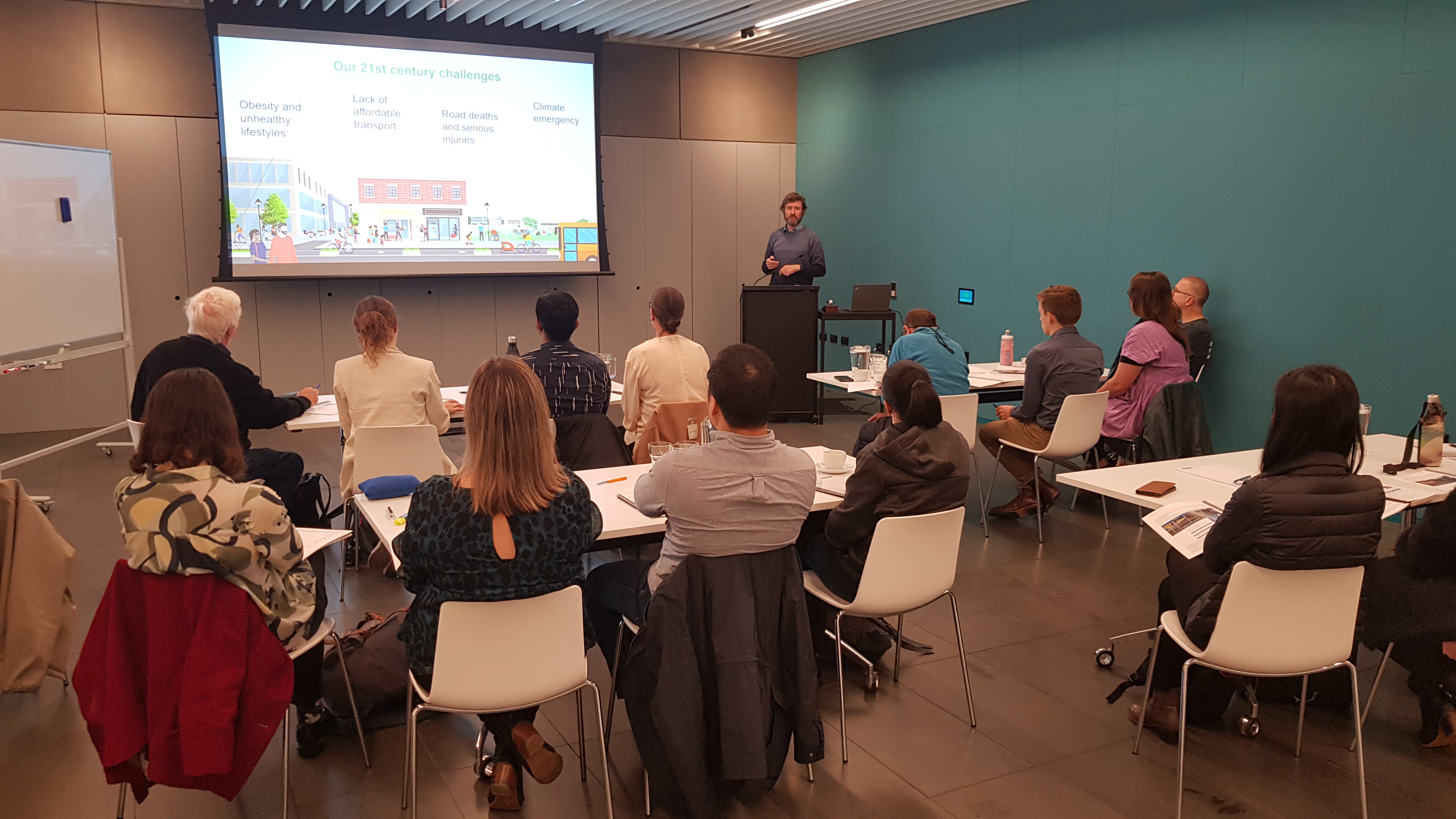
Every day is a school day, and every day is a great day for a bike ride. Recently CAN members Stephen Wood and I attended the Planning and Design for Cycling course, from ViaStrada and Waka Kotahi. This was an excellent opportunity to see the expert information that goes into the wonderful cycling environment we are beginning to see in Aotearoa. Attending the course in Ōtautahi Christchurch was a variety of people from councils and transport engineering organisations across the motu. We had many great discussions.
The course was presented by Glen Koorey and Simon Kennett. Glen is a Director, Principal Transportation Engineer and Transport Planner at ViaStrada Ltd. Simon is a Principal Multi-modal Advisor at Waka Kotahi. The bios for Glen and Simon are considerably more extensive than this article has room for. Suffice to say we were treated to a wealth of knowledge.
The course was divided into the following sections:
1. Introduction
2. Understanding our users
3. Planning for cycling as part of the wider transport system
4. Designing for cycling between intersections
5. Designing for cycling through intersections
6. Putting it all together - brickbats and bouquets
There were many key learnings gained from this course. Here is a quick selection of topics that interested me. I could have easily commented on many more:
Planning and design is not undertaken is isolation
It is easy to simply think of standards, and for New Zealand that is the Cycling Network Guidance (CNG). But alongside this are international standards and best practices, e.g., Austroads, CROW Design Manual for Bicycle Traffic, NACTO Urban Bikeway Design Guide, and the Sustrans Handbook for Cycle Friendly Design.
Further to this there are many Government policies and strategies that underpin the need for well supported active transport. These include benefits for health, inclusiveness, economy, environment, and reducing emissions. The main policy is the Government Policy Statement (GPS) on Transport 2021-31, which guides planning at Waka Kotahi.
Long story short, the many benefits of active transport are well known and there is a desire for it to be well supported.
The needs of people that cycle
For a cycle route to be well adopted, most if not all of the following requirements should be met (from the CROW Design Manual for Bicycle Traffic):
1. Coherence / Cohesion – Is it easy to work out how to get from any A to B?
2. Directness – How efficient is it to get from A to B?
3. Attractiveness – Do people enjoy riding the route?
4. Safety – What are the risks and do people feel safe?
5. Comfort – Is the surface appropriate? Is there protection from the elements? How's the gradient? Are there barriers?
We should think about the places we ride. Perhaps there are relatively easy improvements that can be made. It helps encourage more people to cycle and helps keep people cycling on those less-than-ideal days.
Elements of continuity when travelling through an intersection
In any given day I cycle through many intersections. Before this course, I never really thought about the design in detail. I simply position myself based on lane markings or what the traffic is doing. Many intersections I cycle through, I’ve done so hundreds (possibly thousands) of times before. There is a certain amount of muscle memory at play.
However, it is important to recognise people biking may be new to a location or may have varying abilities. For that reason, is important detailed analysis and design standards are applied for the situation.
Stages when cycling through an intersection, numbered in reverse to provide a visual representation that matches what is seen from the bike.
6. Departure – exited the intersection and are moving into the normal position on the road, cycle lane, etc.
5. Through – travel through the intersection (turning or straight).
4. Storage – waiting for safe entry into the intersection.
3. Approach – traveling up to the wait area within the cycle lane or appropriate lane position.
2. Transition – move to the lane position for approach to the intersection.
1. Mid-block – this well before the intersection (normal position on the road, cycle lane, etc.).
Each of these stages can have a different risk profile depending on the design. As a result, they may or may not meet the needs of the people biking that are in the interested but concerned group. There is an additional Advanced Intersection Design for Cycling course to cover this topic in much more detail.
In summary, I thoroughly enjoyed the Planning and Design for Cycling course. I feel the knowledge gained will greatly complement my daily cycling experience and help support quality active transport discussions with decision makers. Ka pai Glen and Simon.
Discounted enrolment is available to cycle advocates, thanks to Via Strada and Waka Kotahi.
Hamilton - COMING SOON (July TBC)
Wellington - COMING SOON (July TBC)
CAN work in progress
The CAN Board is preparing a submission to the Climate Commission on their draft advice to Government, due on 20 June. The draft advice includes the the following recommendation:
16. Simplify planning and increase funding of integrated transport networks that optimise public and active transport. For major population centres, the Government should also complete cycleway networks by 2030 and take steps to complete rapid transport networks by 2035.
We think the advice needs to set ambitious targets for cycling mode share, such as doubling the proportion of cycling trips each decade, so that 15 percent of trips are by bicycle by 2050.
Recent CAN activities
Making the case for cycling on RNZ The Panel, and TVNZ Breakfast, with Matty McLean and Cr Aaron Keown from Christchurch. Last week Christchurch City Council voted to keep the trial Park Tce bike lane. Thanks to everyone who supported this. Advocacy works.
#UnrealCyclists
Councillor Keown said people tell him 'real cyclists' don't need bike lanes, and are happy to mix with busy traffic.This prompted Julie Fairey, Albert-Eden-Puketāpapa Ward councillor to tweet 'Hey fellow #UnrealCyclists, can we get some pics going of all us folks who are imaginary and find cycling on many roads unsafe? Here’s me with my e-bike Evie.' (Julie and Evie pictured below)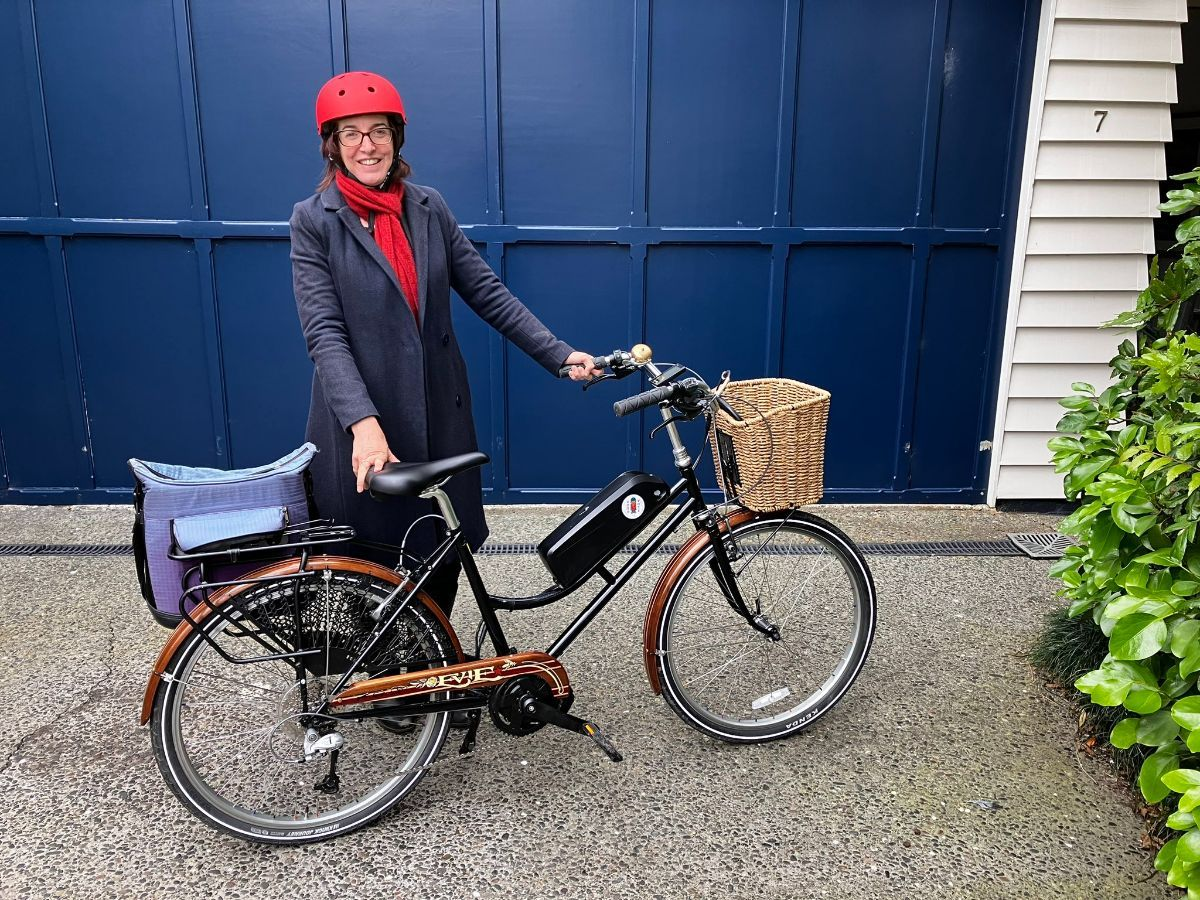
Made a submission to Parliament's Environment Committee on the Natural and Built Environment Bill and Spatial Planning Bill
CAN has concerns that the new outcomes focused regime of these Bills will not provide for the necessary expansion of cycling infrastructure that is required for the transport system in the coming decades, and does not take account of cyclists' health and safety.
Made submissions on Wellington and Upper Hutt speed limits,
Wrote about Bikes and carriage, the perfect marriage for the Future is Rail conference website.
Imagine biking to the railway station, loading your bike, and relaxing on the train ahead of a weekend ride.
You are off to Te Kuiti to ride the Timber Trail. Or to Greymouth for the West Coast Wilderness Trail. Or Kaikoura for the Hurunui Heartland Ride.
The train includes dedicated space for bikes, comfortable seating, yummy meals and refreshments. Instead of battling traffic, you arrive relaxed and ready to ride.
After exploring cycle trails for a couple of days, the train whisks you home. Easy peasy.
This is my vision for the future of rail in New Zealand. More
Fundraising
Doorknocked bike shops to invite their financial support for CAN. Most see the big picture and are willing to help.
Help CAN achieve more
Do you want attractive and safe cycleways? Don’t you hate it when people pass you too close or cut you off? Are you shocked that only 2 percent of our kids bike to school?
Cycling Action Network is a people-powered movement for a better New Zealand. We speak up for you. We rely on you. Here's our achievements since 1997.
Donate today. With more of us, the stronger our voice. CAN needs your help to fund the work that's needed. Please contribute today.
Follow us on Twitter @CyclingActionNZ @PatrickMorgan
and Mastodon @CyclingActionNetwork @PatrickMorgan
About Cycling Action Network
CAN is New Zealand's national network of cycling advocates. We work with government, local authorities, businesses and the community on behalf of cyclists, for a better cycling environment. can.org.nz

